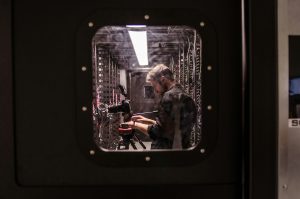The Comprehensive Guide to Understanding Future Transportation Solutions
The future of transportation is constantly evolving and there are many new and innovative solutions on the horizon. One of the biggest challenges facing humanity is finding sustainable and efficient ways to move people and goods around the world. With the rise of technology and the increasing awareness of the environmental impact of traditional transportation methods, the future of transportation is more important than ever. In this comprehensive guide, we will explore the latest advancements in future transportation solutions and how they may change the way we travel in the years to come.
The Need for Future Transportation Solutions
Before we delve into the various future transportation solutions, it is important to understand why they are necessary. The world population is expected to reach 9.7 billion by 2050, and with this increase comes a higher demand for transportation. This will lead to more air and noise pollution, traffic congestion, and a strain on existing infrastructure. Furthermore, the transportation sector is responsible for a significant portion of greenhouse gas emissions, making it a major contributor to climate change. There is a pressing need for innovative and sustainable transportation solutions to address these issues.
Electric and Autonomous Vehicles
Electric Vehicles
Electric vehicles (EVs) have gained popularity in recent years due to their minimal carbon emissions and potential to reduce our reliance on fossil fuels. EVs are powered by rechargeable batteries, which can be charged at home or at public charging stations. The advancements in battery technology have also led to longer driving ranges and faster charging times, making EVs a more practical choice for everyday use.
The future of EVs is even more promising, with the development of wireless charging technology and solid-state batteries that could further increase their efficiency and range. The cost of EVs is also expected to decrease as technology improves, making them more accessible to the general public. In the future, it is likely that EVs will be the dominant form of personal transportation.
Autonomous Vehicles
The prospect of self-driving cars may seem like something out of a science fiction movie, but it is quickly becoming a reality. Autonomous vehicles (AVs) use various technologies, such as sensors and artificial intelligence, to navigate and operate without human input. The potential benefits of AVs include increased safety, reduced traffic congestion, and improved fuel efficiency.
However, the widespread adoption of AVs also comes with its own set of challenges. One major concern is the safety of AVs, as accidents involving self-driving cars have raised questions about their reliability. There are also ethical considerations to be addressed, such as programming AVs to make split-second decisions in life-threatening situations. Nevertheless, with ongoing advancements in technology and regulations, AVs are expected to become a common sight on our roads in the near future.
Hyperloop
Inspired by Elon Musk’s concept, the Hyperloop is a high-speed transportation system that uses sealed tubes to transport passengers or cargo at speeds of up to 700 miles per hour. This innovative solution has the potential to revolutionize long-distance travel, drastically reducing travel time between cities and even countries.
The Hyperloop is powered by either compressed air or magnetic levitation technology, eliminating the need for traditional fuel sources and thus reducing emissions. The low-friction environment also means the system requires minimal energy to operate. Although the Hyperloop is still in the early stages of development, several companies are working towards making it a reality, and it holds great promise for the future of transportation.
Drones
While drones are currently mainly used for recreational and commercial purposes, they have the potential to revolutionize transportation in urban areas. Drone delivery services are already being tested in various cities, providing a faster and more environmentally-friendly option for delivering small packages and goods.
In the future, drones could also be used for personal transportation, with the development of passenger drones. These flying vehicles would offer a faster and more direct alternative to traditional modes of transportation, with the added benefit of reducing road congestion in busy cities. However, there are still challenges to be addressed, such as regulations and safety concerns, before passenger drones can become a feasible option.
Maglev Trains
Magnetic levitation or maglev trains use magnetic fields to suspend and propel the train, resulting in reduced friction and faster speeds. These futuristic trains could reach speeds of up to 375 miles per hour, making them an attractive option for long-distance travel.
Several countries, including China and Japan, have already implemented maglev train systems and are continuing to improve upon the technology. In addition to being fast and energy-efficient, maglev trains have the potential to reduce carbon and noise pollution, making them an eco-friendly alternative to traditional trains.
Conclusion
As our society continues to grow and evolve, it is crucial to consider the impact of our transportation systems on the planet. The comprehensive guide to understanding future transportation solutions has highlighted some of the most exciting and promising advancements in this field. From electric and autonomous vehicles to hyperloop and maglev trains, these solutions offer a glimpse into a more sustainable and efficient future for transportation. With ongoing research and development, we can look forward to a future where we can travel faster, safer, and with minimal impact on the environment.











